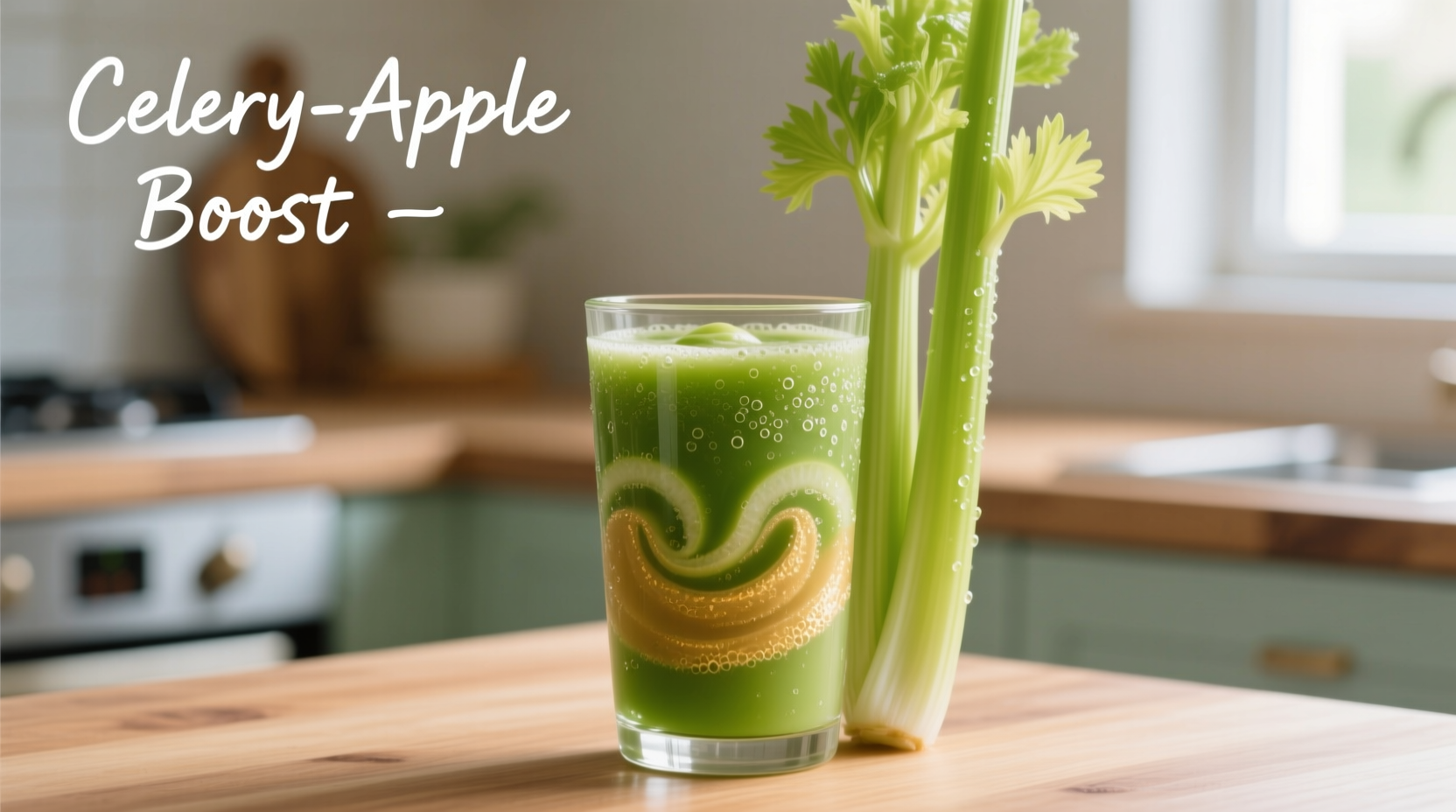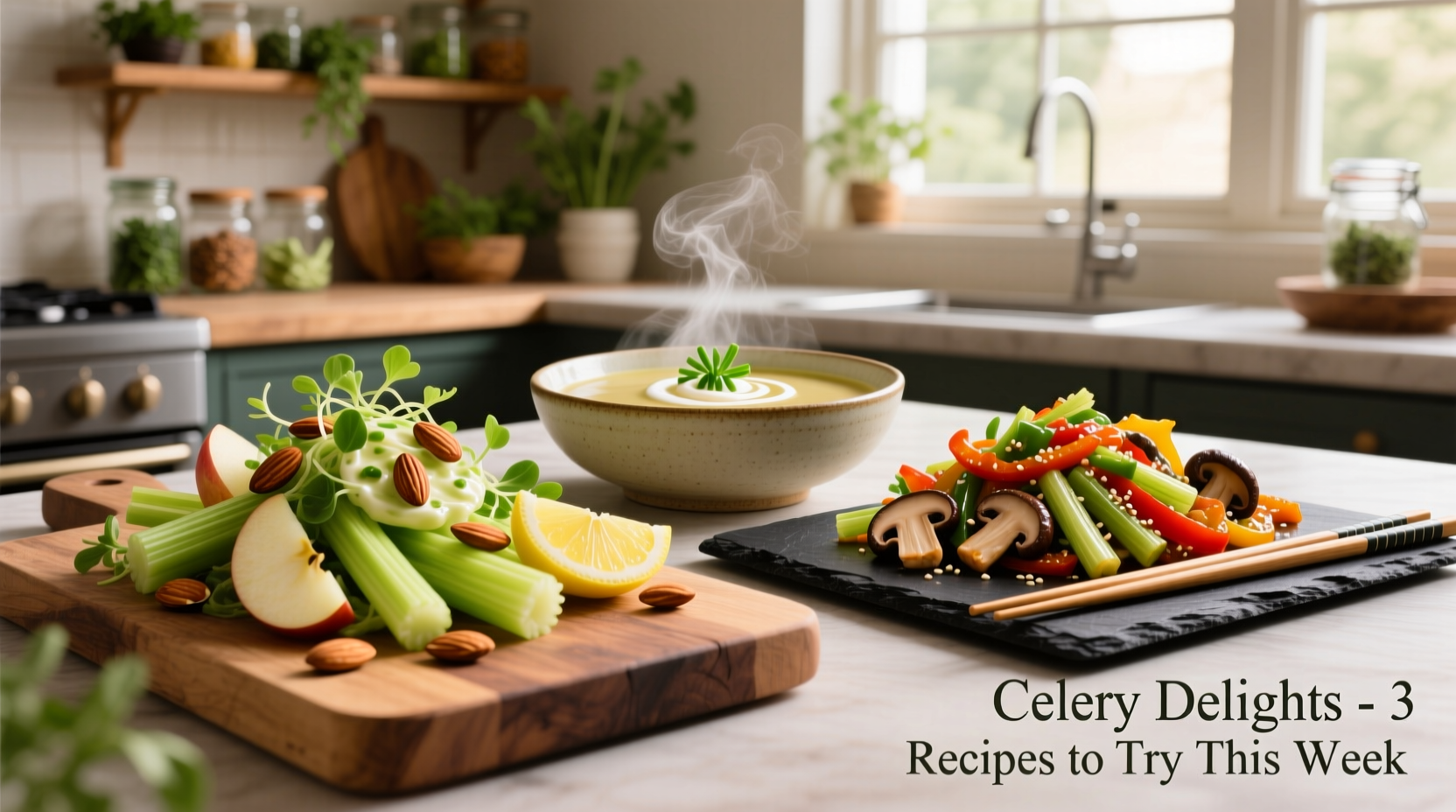Every year, American households throw away nearly 30-40% of the food supply, with fresh produce like celery often ending up in the trash. This guide solves that problem with practical recipes that use the entire celery plant, ensuring nothing goes to waste while creating flavorful dishes you'll actually want to make.
Why Celery Deserves More Than Just Soup Garnish
Celery isn't just a low-calorie snack—it's a flavor powerhouse with surprising versatility. The stalks provide crunch and subtle saltiness, leaves offer herbal notes comparable to parsley, and the root (celeriac) brings earthy depth. Understanding these components helps you use celery effectively across different cooking methods.
| Celery Component | Best Cooking Method | Flavor Profile | Recommended Use |
|---|---|---|---|
| Stalks | Raw, braised, roasted | Salty, vegetal, crisp | Salads, stocks, stir-fries |
| Leaves | Raw, finished dishes | Herbaceous, concentrated | Garnish, pesto, compound butter |
| Celeriac | Roasted, pureed, mashed | Earthy, nutty, sweet | Purees, gratins, roasted sides |
This breakdown from the USDA Agricultural Research Service shows why using all parts of celery creates more complex flavors. Many home cooks discard the leaves and roots, missing out on significant flavor potential.
Breakfast: Start Your Day with Celery
Celery-Apple Breakfast Smoothie
This 5-minute smoothie uses celery leaves for herbal notes that balance sweetness. The fiber-rich combination keeps you full until lunch.
- 1 cup unsweetened almond milk
- 1 celery stalk with leaves
- ½ green apple, cored
- ½ banana, frozen
- 1 tbsp chia seeds
- Handful of spinach
Blend until smooth. The celery leaves add complexity without overpowering—perfect for those new to cooking with celery. According to culinary research at Cooking Light, adding herbaceous elements like celery leaves to sweet smoothies creates more satisfying flavor profiles.

Lunch: Quick Celery-Centric Meals
Crunchy Celery Salad with Lemon-Tahini Dressing
This updated version of the classic Waldorf salad uses raw celery for maximum crunch and flavor absorption.
- 3 celery stalks, thinly sliced
- 1 crisp pear, diced
- ¼ cup toasted walnuts
- 2 tbsp dried cranberries
- 2 tbsp fresh celery leaves
Dressing: Whisk 2 tbsp tahini, 1 tbsp lemon juice, 1 tsp maple syrup, and 2 tbsp water until smooth. Toss with salad ingredients. The raw preparation preserves celery's natural crunch while allowing it to absorb the creamy dressing—ideal for meal prep as it stays crisp for 3 days.
Dinner: Comforting Celery-Forward Dishes
Braised Celery with Lemon and Garlic
This elegant side dish transforms celery into a sophisticated accompaniment that pairs perfectly with roasted chicken or fish.
- 4 celery stalks, cut on diagonal
- 2 tbsp olive oil
- 2 garlic cloves, sliced
- ½ cup vegetable broth
- 1 tbsp lemon juice
- 1 tsp lemon zest
- Fresh celery leaves for garnish
Heat oil in skillet over medium heat. Add celery and garlic, sauté 3 minutes. Add broth, cover, and simmer 8-10 minutes until tender-crisp. Remove lid, increase heat, and cook until liquid reduces. Stir in lemon juice and zest. Garnish with celery leaves. This braising technique—recommended by the America's Test Kitchen research team—enhances celery's natural sweetness while maintaining texture.
Celery and Mushroom Risotto
This vegetarian risotto uses finely diced celery to build flavor depth without overwhelming the dish.
- 4 cups mushroom broth, kept warm
- 2 celery stalks, finely diced
- 8 oz mushrooms, sliced
- 1½ cups Arborio rice
- ½ cup dry white wine
- 2 tbsp butter
- ¼ cup grated Parmesan
- 2 tbsp chopped celery leaves
Sauté celery and mushrooms until golden. Add rice and toast 2 minutes. Add wine and cook until absorbed. Add warm broth ½ cup at a time, stirring until absorbed before adding more. Finish with butter, Parmesan, and celery leaves. The finely diced celery integrates seamlessly, providing subtle flavor without competing with the mushrooms.
Practical Tips for Maximizing Your Celery
Storage That Keeps Celery Crisp
According to the FDA Food Code, proper storage extends celery's shelf life significantly:
- Whole stalks: Wrap tightly in aluminum foil and store in crisper drawer (lasts 3-4 weeks)
- Cut pieces: Store in airtight container with damp paper towel (lasts 1 week)
- Celery leaves: Treat like fresh herbs—store in jar with water like flowers
When to Use Raw vs. Cooked Celery
Celery's behavior changes dramatically with cooking. Understanding these differences prevents disappointing results:
- Raw: Best for salads, crudités, and finishing dishes—preserves crunch and fresh flavor
- Braised: Ideal for side dishes—softens texture while concentrating flavor
- Roasted: Brings out natural sweetness—perfect for celeriac or thick celery stalks
- Stocks: Use trimmings and tougher outer stalks for maximum flavor extraction
Make Celery the Star, Not Just a Supporting Player
With these recipes and techniques, you'll transform celery from an afterthought into a versatile kitchen staple. The key is understanding how each part contributes differently to dishes—stalks for texture, leaves for herbal notes, and roots for earthy depth. By using the entire plant, you reduce food waste while creating more complex, satisfying meals. Start with one recipe this week and discover why professional chefs consider celery one of the most underrated ingredients in their pantry.











 浙公网安备
33010002000092号
浙公网安备
33010002000092号 浙B2-20120091-4
浙B2-20120091-4